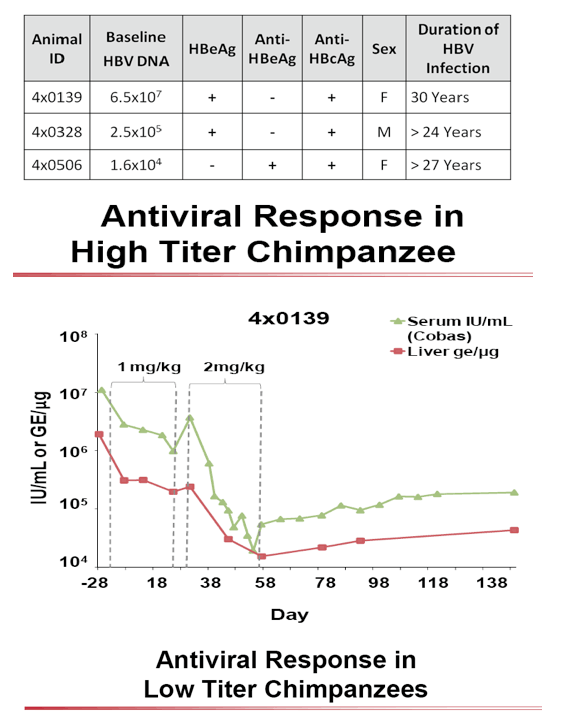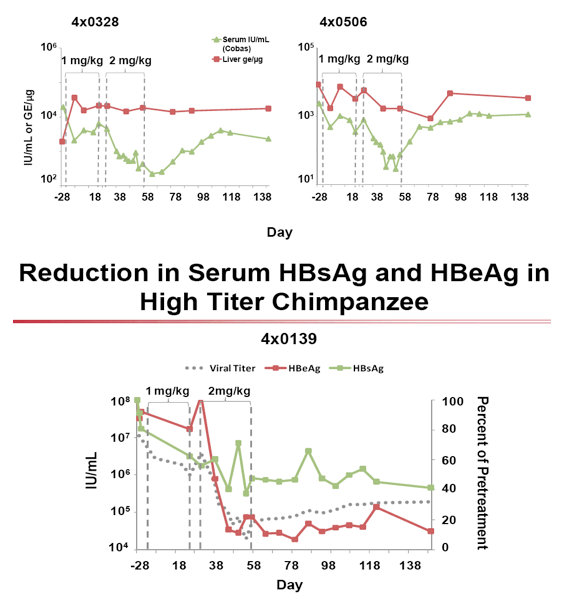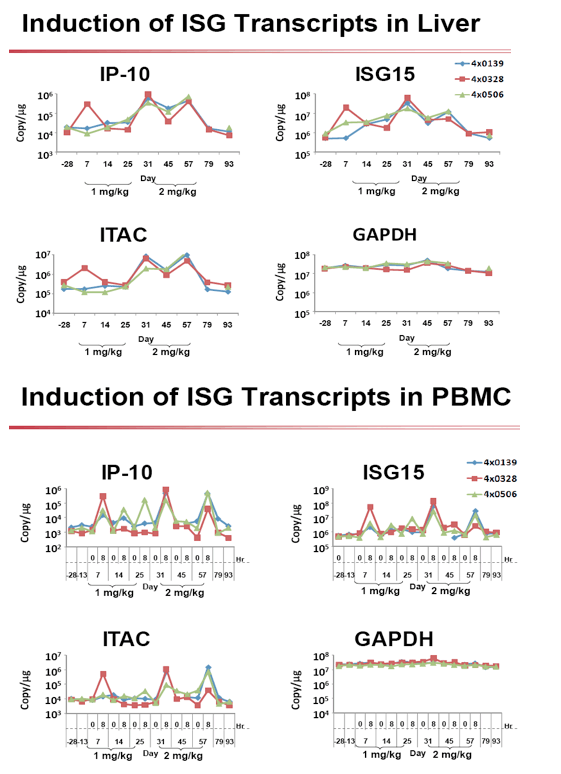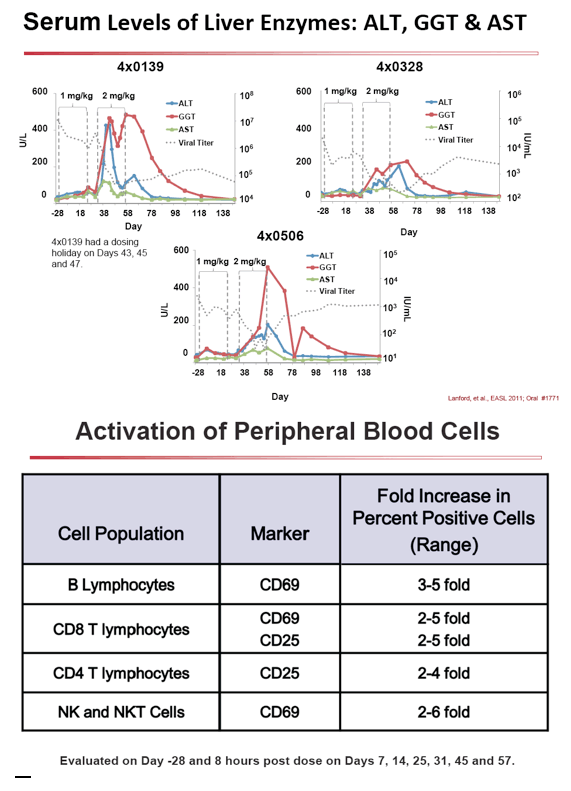 |
 |
 |
| |
Therapeutic Efficacy of a TLR7 Agonist for HBV Chronic Infection in Chimpanzees
|
| |
| |
Reported by Jules Levin
EASL 2011 March 31-April 2 Berlin Germany
Robert Lanford1, Bernadette Guerra1, Deborah Chavez1, Vida L. Hodara1,
Xubin Zheng2, Grushenka Wolfgang3, Daniel B. Tumas3
Department of Virology and Immunology1, Southwest Foundation for Biomedical Research and Southwest National Primate Research Center, San Antonio, TX 78227
Departments of Drug Metabolism2and Drug Safety Evaluation3,
Gilead Sciences, Inc., 333 Lakeside Drive, Foster City, CA 94404, USA
THERAPEUTIC EFFICACY OF THE TLR7 AGONIST GS-9620 FOR HBV CHRONIC INFECTION IN CHIMPANZEES
R.E. Lanford1*, B. Guerra1, D.C. Chavez1, V.L. Hodara1, X. Zheng2, G. Wolfgang3, D. Tumas3
1Department of Virology and Immunology, Southwest Foundation for Biomedical Research, San Antonio, TX, 2Department of Drug Metabolism, 3Department of Drug Safety Evaluation, Gilead Sciences, Inc, Foster City, CA, USA. *rlanford@sfbr.org
ABSTRACT
Background and aims: Activation of TLR7 results in the production of interferon and immunostimulatory cytokines and activation of innate and adaptive immunity. GS-9620, a potent and selective oral TLR7 small molecule agonist, was evaluated for single agent efficacy in chimpanzees with chronic HBV infection. GS-9620 is being developed for the treatment of chronic hepatitis B and C.
Methods: This study treated three chimpanzees chronically infected with HBV. GS-9620 was delivered orally three times per week at 1 mg/kg for 4 weeks followed by 2 mg/kg for 4 more weeks. GS-9620 serum concentrations were determined by an LC/MS/MS method. Animals were monitored by evaluation of serum levels of HBV DNA, HBsAg, HBeAg, CBC, blood chemistries, activation of lymphocyte subsets by flow cytometry, cytokine and chemokine levels by Luminex, liver histology and immunohistochemistry, and induction of interferon stimulated genes (ISGs) in liver and blood.
Results: Treatment with GS-9620 reduced viral load by 2.0 logs in all three animals and resulted in a corresponding 50-61% decrease in HBsAg and 58-93% decrease in HBeAg serum levels. The duration of the maintenance of at least a one log reduction in viral load was for 64 to >121 days, the latter to the end of post dose monitoring in the animal with high pretreatment viral load. Pharmacodynamic responses were significant at 1 mg/kg and were further increased at 2 mg/kg where ISGs were increased greater than 100-fold. Treatment resulted in increased numbers of activated blood lymphoid and NK cells, increased numbers of apoptotic hepatocytes, and a reversible lymphocyte infiltrate in the liver. Treatment was well tolerated and adverse effects were both reversible and consistent with an immune mediated response to hepadnavirus infection.
Conclusions: GS-9620 monotherapy induced a therapeutic anti-viral immune response in chimpanzees chronically infected with HBV. Viral load reduction was accompanied by cytokine and chemokine responses and a lymphocyte infiltrate in the liver. Viral load remained suppressed through the duration of the follow up period in a high viral titer animal. These results demonstrate GS-9620 has potential for use in the treatment of chronic hepatitis B.







|
| |
|
 |
 |
|
|